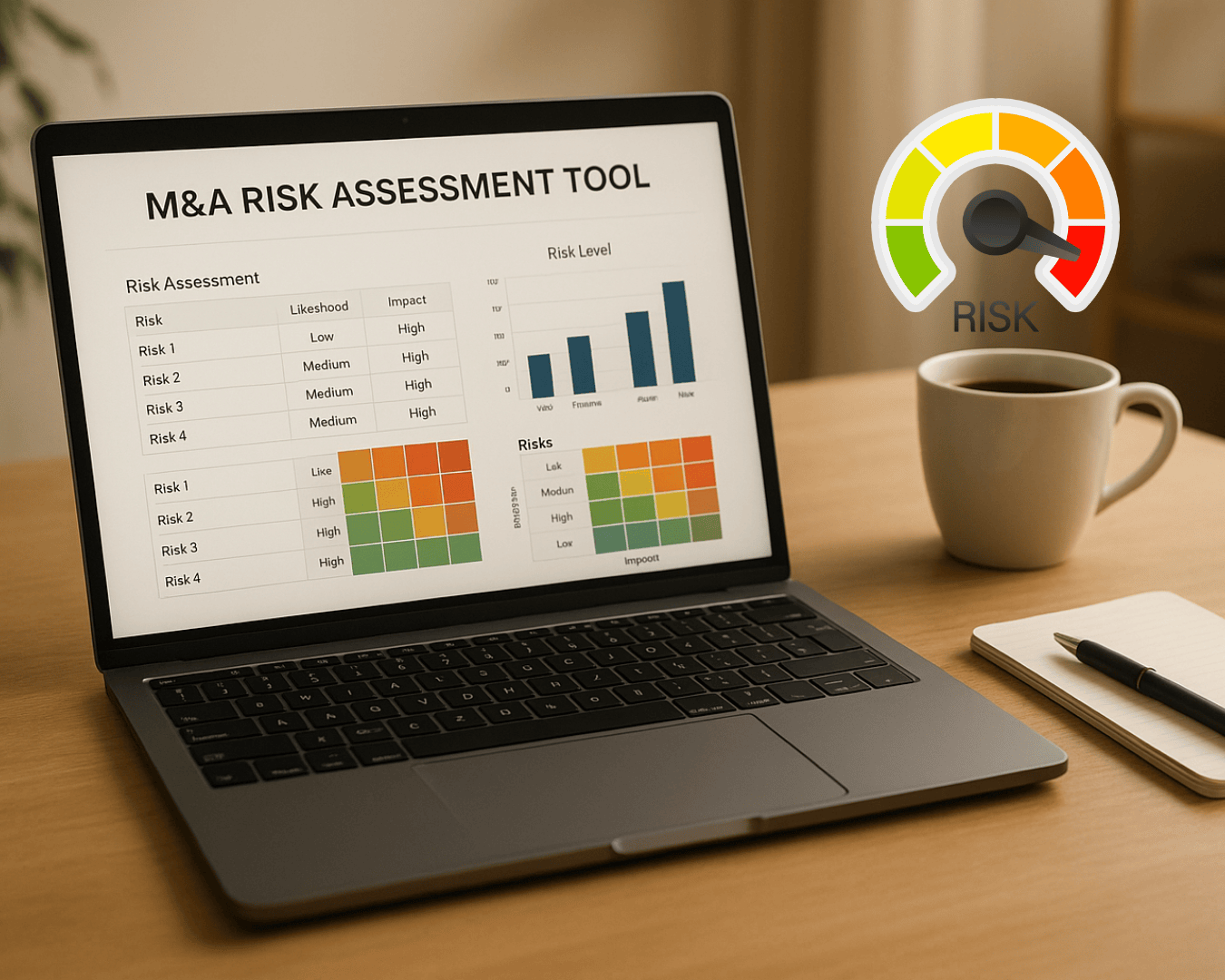When a business acquisition is finalized, the real work begins: integrating two companies into one cohesive operation. A post-acquisition workflow lays out the steps required to align processes, retain customers, and ensure smooth operations. Here's what you need to know:
- Set Clear Goals: Define measurable objectives like customer retention, revenue growth, and cost savings. Use SMART criteria for tracking progress.
- Customer Handoff: Ensure a smooth transition by securely transferring data, mapping accounts, and maintaining clear communication with clients.
- Data Integration: Validate records, remove duplicates, and comply with privacy laws like GDPR or CCPA.
- Communication Plan: Keep customers informed with transparent updates through multiple channels. Regular communication reduces uncertainty.
- Build an Integration Team: Assign leaders for key areas like HR, IT, and customer service to oversee the transition.
- Gather Feedback: Use surveys, direct calls, and support tracking to identify and address customer concerns.
- Align Operations: Standardize workflows, adopt shared tools, and train teams to maintain consistent service.
Success hinges on clear planning, open communication, and leveraging tools to simplify integration. Platforms like Clearly Acquired streamline these processes, helping businesses manage transitions effectively while maintaining customer trust.
Post-merger Integration (PMI): Integration Checklist (Part 1)
Set Integration Goals and Success Metrics
Once workflows are streamlined, the next step is setting clear integration goals and measurable success metrics. These goals act as a roadmap for a post-acquisition process. Without specific benchmarks, it’s tough to gauge progress or ensure effective integration.
Define Key Integration Objectives
Your integration objectives should align with the strategic purpose of the acquisition. Whether you’re expanding into new markets, achieving cost efficiencies, or enhancing technology, your goals need to reflect those priorities.
Most integration efforts revolve around four main objectives: customer retention, operational stability, revenue growth, and cost synergies. Tailor these objectives to your unique situation and rank them based on their importance to your overall business strategy.
A practical way to do this is by holding a planning session with leadership teams from both organizations. Use a weighted scoring system to prioritize objectives by their potential impact.
For example, a technology company that acquired a smaller competitor identified three core goals: retain 95% of key customers, integrate core IT systems within 90 days, and achieve $1 million in cost synergies within the first year. By focusing on these specific targets, they retained 98% of customers and exceeded their synergy goal, securing $1.2 million in savings within 12 months.
Create Success Metrics
Once objectives are set, the next step is defining measurable metrics to track progress. Using SMART (Specific, Measurable, Achievable, Relevant, Time-bound) criteria ensures these metrics are actionable and meaningful. Regularly reviewing these key performance indicators (KPIs) helps guide decision-making throughout the integration process.
Here are some common success metrics tied to integration goals:
- Net Promoter Score (NPS) for customer satisfaction
- Customer churn rate to monitor retention
- Employee retention rate to gauge internal stability
- Support ticket resolution time for operational efficiency
- Revenue growth to measure financial performance
- Cost savings from synergies
The table below offers examples of how integration objectives align with specific KPIs and typical targets:
| Integration Objective | Example KPI | Typical Target |
|---|---|---|
| Customer Retention | Churn Rate, NPS | <5% churn, NPS > 50 |
| Revenue Growth | Year-over-year Revenue Increase | 10–20% growth post-integration |
| Operational Stability | System Downtime, Error Rates | <1% downtime, <2% error rate |
| Employee Engagement | Retention Rate, Survey Score | >90% retention, >80% positive |
| Cost Synergies | Cost Savings, Margin Improvement | 5–15% cost reduction |
Accurate data is critical for tracking these metrics. Tools like customer relationship management (CRM) platforms, HR systems, financial reporting software, and customer feedback tools can streamline data collection. Platforms like Clearly Acquired’s deal management hubs and analytics dashboards provide real-time insights, making it easier to monitor progress and adjust strategies as needed.
To avoid common pitfalls, stay clear of vague or overly ambitious goals. Ensure your metrics align with business objectives and involve key stakeholders in the goal-setting process. Gathering regular feedback through surveys, interviews, or focus groups can help refine your approach. For instance, if customers express confusion post-acquisition, you might set a new goal to improve onboarding communications and use NPS or satisfaction surveys to track progress.
When integration goals and metrics are clearly defined, they provide the focus and alignment needed to navigate the transition successfully.
Customer Handoff and Data Integration
Managing customer handoff and integrating data seamlessly are essential steps in maintaining trust and ensuring smooth operations after an acquisition. This stage plays a pivotal role in determining whether customers remain loyal or decide to leave, making it a cornerstone of the integration process. It involves secure data transfers, proper account alignment, and clear communication to keep customer confidence intact during the transition.
Execute a Smooth Customer Handoff
A successful customer handoff starts with secure data transfers and account mapping. Use encrypted channels to safeguard customer records, transaction histories, and communication logs during the transfer. Establish secure connections between systems and standardize data fields using templates to ensure consistency. Involving both IT and customer service teams in this process helps catch potential issues early.
Automation tools can assist in identifying duplicate accounts and filling data gaps, but manual reviews remain critical, especially for high-value clients. For example, a tech company that acquired a SaaS provider used automated tools for data migration while manually verifying records for their top-tier customers. This approach helped maintain strong customer satisfaction and minimized churn during the first 90 days post-acquisition.
Personalized communication is equally important. Create dedicated support channels and train staff to handle acquisition-related inquiries. Start with transparent updates about the acquisition, explaining any changes customers can expect. Personalized outreach, such as direct calls or tailored emails from existing account managers, can reassure customers about service continuity.
Involving key customer-facing personnel throughout the transition is another critical element. Familiar faces managing customer accounts can provide a sense of stability and trust that new team members cannot immediately replicate. Once the handoff is complete, ensure the same level of diligence is applied to data integration processes.
Ensure Data Accuracy and Compliance
After the handoff, the focus shifts to consolidating and verifying customer data. This involves validating records, conducting regular audits, and removing duplicates to ensure accuracy and completeness. Addressing these details upfront helps prevent service disruptions down the line.
Data mapping and reconciliation align records between the two companies, while documenting any changes to account management or service processes ensures customer-facing teams are prepared to explain updates to clients.
Compliance with privacy regulations is non-negotiable. For example, the California Consumer Privacy Act (CCPA) requires obtaining customer consent for data transfers, while companies operating globally must also adhere to the General Data Protection Regulation (GDPR). Update privacy policies to reflect new data practices, and secure the necessary consents to meet legal standards. Adopting the strictest applicable regulations ensures comprehensive data protection.
To monitor the success of the integration, implement systems to track key metrics such as customer retention rates, resolved data discrepancies, post-transition satisfaction scores, and support inquiries related to the handoff. These indicators highlight areas that need immediate attention and help measure the effectiveness of your strategy.
Tools like Clearly Acquired’s deal management hubs can simplify the process. These platforms offer automated NDA deployment and advanced data verification features, ensuring secure data transfers while meeting compliance standards. They centralize integration tracking, reducing manual errors and improving both speed and accuracy.
Lastly, financial incentives like holding 10%–20% of the purchase price in escrow for 12–24 months can encourage thorough data integration and effective management of customer-related liabilities. This approach ensures that the handoff and data integration processes are handled with care, supporting a smooth transition and safeguarding customer trust.
Build a Communication Plan
Effective communication is the backbone of a smooth post-acquisition integration. Once you've locked down data transfers and customer handoffs, the next major step is creating a communication strategy that keeps customers informed, reassured, and engaged throughout the transition. With customer data secure, this plan becomes the guide for navigating the changes ahead.
Transparent communication is key to building trust and easing uncertainties during what can be a turbulent time. Companies that prioritize communication early in the integration process are 50% more likely to achieve or surpass their synergy goals post-acquisition. This makes designing a well-thought-out communication plan a must from the very beginning.
Create the Initial Communication Strategy
Start by crafting an initial communication strategy that aligns with your integration objectives. Timing is critical - announce the acquisition promptly to ensure customers hear the news directly from you, not from external sources. This means having communication materials ready to go before the deal closes and deploying them immediately after the announcement.
Be clear about what’s changing and what’s staying the same. Address any potential service disruptions upfront and provide a detailed roadmap that includes key milestones, timelines, points of contact, and available support resources. This approach keeps customers confident and informed.
Use a mix of communication channels to ensure you reach all customer segments. For example:
- Enterprise clients: Personalized calls from senior account managers.
- Smaller customers: Detailed email updates paired with FAQs.
- General audience: Updates via your website or newsletters.
Your messaging should be concise and transparent. Outline timelines, highlight benefits, and provide a dedicated contact for questions. Setting up a centralized transition portal can also be incredibly helpful. This portal can serve as a one-stop resource for updates, FAQs, and support, giving customers easy access to the information they need during the transition.
Maintain Customer Engagement
Initial announcements are just the beginning - ongoing communication is crucial to maintaining customer confidence. Regular updates and touchpoints during the transition period help reinforce that everything is on track.
Offer dedicated support channels for acquisition-related inquiries, such as specific phone lines, email addresses, or live chat options. Make sure your support team is well-trained and equipped with the latest information to handle customer questions effectively.
Proactive communication is always better than waiting to respond to issues. Hosting webinars or live Q&A sessions can be a great way to let customers ask questions directly and hear updates from leadership. These interactive formats not only address concerns but also foster trust by showing transparency and accessibility.
It’s also important to track how well your communication efforts are working. Monitor metrics like customer satisfaction scores, support ticket trends, and email engagement rates to identify areas for improvement and adjust your approach as needed.
For example, Clearly Acquired’s deal management hubs can simplify these workflows. Their tools automate customer notifications and provide ready-made templates for announcements, while their advisory resources offer proven strategies for keeping customers engaged throughout the acquisition process.
Build an Integration Team
Once your communication plan is in place, the next step is assembling a focused integration team to oversee the post-acquisition process. This team ensures all departments work together effectively, laying the groundwork for smooth collaboration across the board.
A well-organized team is essential. Early efforts to align different work cultures through a dedicated team can significantly improve how quickly and effectively the two organizations work together. That’s why structuring this team should be a top priority from the start. This group will also bring your communication strategy to life.
Your integration team should include representatives from key areas such as finance, HR, IT, customer service, and management.
Define Team Roles
Begin by appointing an Integration Lead who will head the entire process and ensure it stays aligned with business objectives. This individual acts as the main point of accountability, driving all integration efforts forward.
Next, assign leaders for each functional area. For instance:
- The HR Leader focuses on blending organizational cultures, retaining employees, and managing structural changes - tasks that are critical for a smooth transition.
- The IT Lead handles the integration of technology systems, software compatibility, and security measures to ensure the technical side supports your goals.
- Operations and Finance Leaders oversee business function alignment and financial consolidation, ensuring nothing falls through the cracks.
Customer service teams should lead efforts to maintain consistent communication with clients, while management provides strategic oversight and keeps the process on track. Clearly defining these roles helps prevent confusion and ensures every team member knows their responsibilities.
Assign tasks based on expertise. For example, customer service teams - who are closest to your clients - should take charge of communication, while IT teams manage data integration. This approach ensures that those with the most knowledge in each area are making the key decisions.
Train Customer-Facing Teams
Once team roles are clearly defined, shift your focus to preparing customer-facing teams for their responsibilities. These teams are on the front lines, handling customer concerns and questions, so their readiness is essential to maintaining service quality during the transition.
Provide targeted training on new products, processes, and updated communication protocols. Use workshops, online modules, and other resources to bring team members up to speed. Offer ongoing support tools like FAQs, escalation guidelines, and quick-reference materials. Setting up feedback loops will also help your teams feel confident and prepared to address customer needs during this uncertain period.
Retention of key customer-facing staff is critical to preserving the client experience and avoiding service interruptions. If staffing changes are necessary, plan them carefully to minimize disruptions during this sensitive time.
Keep a close eye on customer satisfaction metrics during this phase, such as response times, resolution rates, and feedback scores. Use this data to refine training and processes as needed. The goal is to ensure performance levels match or exceed those before the acquisition.
To streamline these efforts, take advantage of tools like Clearly Acquired’s deal management hubs and AI-powered solutions. These platforms can simplify training, track performance metrics, and support integration tasks, making it easier for your teams to stay organized and maintain high service standards throughout the transition.
sbb-itb-a3ef7c1
Gather Customer Feedback and Improve Processes
Once you’ve set up a solid communication plan and integration team, the next step is to gather customer feedback. This feedback is essential to fine-tune workflows and ensure the transition meets customer expectations. After training your team, put systems in place to collect immediate and ongoing feedback. Listening to customers gives you a clear picture of how the transition is working for them and points out areas that might need adjustments.
Start collecting feedback as soon as the acquisition is announced, and keep it going throughout the integration process. This approach allows you to catch potential issues early and make changes before they escalate into bigger problems that could affect customer satisfaction or loyalty.
Set Up Feedback Systems
Building on earlier efforts to ensure a smooth transition, feedback systems help you gather actionable insights from customers. Use several channels to capture a variety of perspectives:
- Email surveys: These are great for gathering feedback after specific interactions or milestones. Keep surveys short - no more than five questions - to increase response rates.
- Direct phone calls: Speaking directly with key accounts provides deeper insights and shows customers that their opinions matter. Schedule these calls within the first 30 days and follow up regularly. Focus on understanding their top concerns and what’s working well.
- Online feedback forms: Placing these on your website or customer portal makes it easy for customers to share their thoughts whenever they want. Include questions about service quality, communication, and any challenges they’re facing.
- Customer service tracking: Train your support teams to document recurring questions, complaints, and suggestions during regular interactions. This creates a steady stream of feedback without requiring extra effort from customers.
- Focus groups: Engage a representative group of customers from different segments of your business. These sessions provide insights beyond what surveys can reveal, helping you understand the reasons behind customer suggestions or concerns.
Use Feedback to Improve Processes
Once you’ve collected feedback, the next step is to turn it into meaningful improvements. Start by organizing the feedback into themes like communication challenges, service quality concerns, or product availability issues. Look for patterns and prioritize the most pressing problems.
Hold weekly feedback review meetings with your integration team to make sure customer input shapes your decisions. Use these sessions to discuss recurring themes, brainstorm solutions, and assign team members to implement changes. Keep track of decisions and monitor progress.
Customer feedback often highlights the need to address response times. If customers mention delays in service or communication, consider adjusting staffing levels or streamlining processes. Track response time metrics weekly and share updates with customers about the improvements you’ve made.
Inconsistent experiences can also be a common issue. Use feedback to develop standardized procedures and create additional training materials to ensure all team members are on the same page. This helps provide a more consistent experience for customers.
Adjust your communication frequency based on customer preferences. Some customers appreciate frequent updates, while others prefer less frequent but more detailed communication. Segment your customer base and tailor your approach accordingly.
If feedback shows gaps between customer expectations and actual service, consider modifying service delivery. This might involve adjusting timelines, adding new support channels, or tweaking product offerings to better align with customer needs during the transition.
To measure the impact of these changes, track metrics like customer satisfaction scores, retention rates, and service quality before and after making adjustments. This data helps you understand what’s working and informs future decisions.
Finally, close the loop by letting customers know about the improvements you’ve made. Share brief updates that highlight specific changes and thank them for their input. This not only shows that you value their feedback but also encourages them to stay engaged in the process.
Clearly Acquired’s AI-powered tools can simplify feedback analysis by identifying patterns and trends across large volumes of data. These tools integrate seamlessly with your existing systems, making it easier to prioritize changes and track their effectiveness over time. By continuously refining your post-acquisition processes based on customer input, you can ensure your strategy evolves to meet real customer needs.
Align Culture and Operations
Once you've gathered customer feedback and made initial adjustments, the next big move is aligning the cultures and operations of both organizations. Why? Because a unified culture ensures smooth teamwork and consistent service, while misalignment can lead to mixed messages and erode the trust you've worked hard to build. Start by blending company cultures before diving into operational standardization.
Integrate Company Cultures
Cultural integration starts with understanding what makes each organization tick - its core values, communication styles, and work habits. Conduct cultural assessments with key team members to identify where the two companies differ in decision-making, customer service priorities, and workplace expectations.
Focus on how these differences might impact customers. For instance, if one company values quick responses and the other leans toward detailed communication, don't just pick one over the other. Instead, create a hybrid approach that combines the strengths of both.
Early in the process, hold joint team meetings to tackle these differences head-on. Use these sessions to explore how contrasting approaches to customer service, problem-solving, and communication can complement each other. Encourage team members to share examples of what worked well in their previous roles and brainstorm ways to merge these practices.
Develop shared value statements that reflect the best of both worlds. These statements should guide daily decisions while leaving room for diverse working styles. For example, if one company prioritizes innovation and the other focuses on reliability, a combined vision might be: "Delivering reliable solutions through innovative thinking."
Another practical step? Launch cross-company mentorships where employees from both organizations team up to handle customer accounts together. These partnerships promote natural knowledge sharing and help ensure consistent service delivery. Rotate pairings regularly to maximize learning opportunities across teams.
Standardize Operations
Once the cultural foundation is set, shift gears to streamline operations. Start by mapping out the workflows from both organizations to spot overlaps, gaps, or conflicting processes - especially in customer-focused areas like order processing, support ticket management, and account handling.
Create unified standard operating procedures (SOPs) that bring together the best practices from both sides. These SOPs should be clear enough to ensure consistency but flexible enough to adapt to unique customer needs. Include step-by-step instructions and, where useful, decision trees to guide common scenarios.
To support these unified processes, adopt shared technology platforms. This might include integrating communication tools or combining support ticketing systems. Roll out these changes carefully to avoid disrupting customer service.
Quality assurance is another key piece. Set up regular checks to review service quality, customer interactions, and team performance. Use consistent evaluation criteria across all teams, regardless of their original organization, to maintain fairness and alignment.
Define clear escalation procedures so customers experience seamless support when issues require input from multiple teams or departments. Make sure every team member understands these paths and knows how to follow them.
Hold regular operational review meetings with representatives from both organizations. These sessions should focus on fine-tuning processes, simplifying workflows, and using customer feedback to drive improvements.
Finally, train all customer-facing teams on the new procedures through interactive workshops. Forget relying solely on documentation - role-playing real-world scenarios and challenging customer interactions helps employees internalize the changes and feel confident in their roles.
Keep an eye on key performance indicators like customer satisfaction scores, response times, and resolution rates to measure how well the integration is working. Address any gaps quickly, whether through additional training or process tweaks.
Clearly Acquired's deal management tools can make this easier by providing centralized dashboards that track key metrics across teams. These insights help you pinpoint areas needing attention and measure the overall success of your integration efforts.
Use Clearly Acquired's Tools and Resources
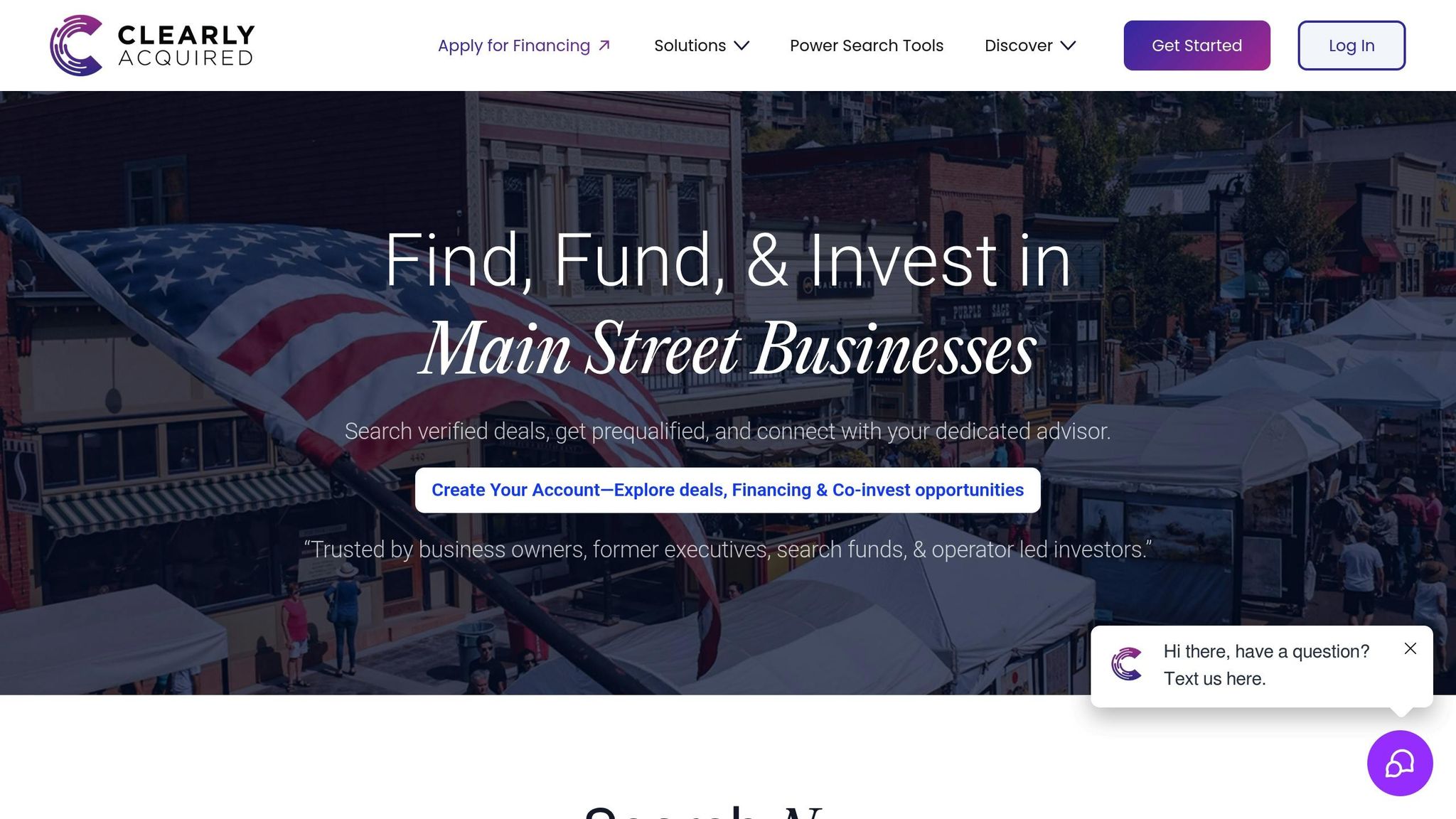
Once you've aligned your cultures, it's time to let technology do the heavy lifting in your post-acquisition process. Clearly Acquired's platform is packed with tools designed to simplify the complexities that follow a deal. These tools help you stay organized, keep up the momentum, and ensure critical tasks are completed efficiently. Here's how they bring everything together.
Use Deal Management Tools
The post-acquisition phase can feel overwhelming with all the data and tasks flying around. Clearly Acquired's deal management hubs act as a centralized command center, replacing scattered spreadsheets, endless email threads, and multiple disconnected tools. Everything you need is in one place.
The platform also includes secure data rooms for sharing sensitive information. With permission-controlled access, team members only see the data relevant to their roles, ensuring both security and a seamless transfer of knowledge.
Need to keep track of your progress? The platform's pipeline management tools have you covered. You can customize stages - from initial contact to final transition - to identify bottlenecks and ensure every customer account stays on track.
For deeper insights, the AI-driven business valuation tools analyze financial data and market trends, giving you a clear picture of how your integration efforts are impacting overall business value. These insights can guide your next steps and help you make smarter investment decisions.
But it doesn’t stop there - Clearly Acquired's advanced insights and advisory support take integration to the next level.
Access Advisory and Educational Resources
Sometimes, post-acquisition hurdles require expertise that your team might not have. That’s where Clearly Acquired's advisory support steps in, connecting you with specialists in integration strategies, customer retention, and operational efficiency. Their guidance can be a game-changer during this phase.
For those who want to dive deeper, the platform offers a business acquisition course with modules specifically focused on post-acquisition strategies. Learn how to manage customer expectations, streamline workflows, and monitor success through key performance indicators - all while working hands-on with your integration tasks.
Stay ahead of the curve with market trends and intelligence reports, which provide insights into industry benchmarks and emerging practices. These reports help you set realistic goals and uncover opportunities to speed up your integration process.
As you evaluate further investments, the platform's financing strategy guides come in handy. Whether you're considering equipment financing or working capital lines, these guides can help you decide when and how to deploy additional capital to support your integration efforts.
Finally, Clearly Acquired's growth insights tools analyze your combined customer base to uncover opportunities for cross-selling, address service gaps, and explore new avenues for expansion. These insights make it easier to tap into synergies and unlock new revenue streams from your integration efforts.
Conclusion: Post-Acquisition Success
Achieving success after an acquisition depends on setting clear integration goals, maintaining open communication, and using the right technology to streamline processes. By following the structured integration steps outlined earlier, businesses can create a workflow that not only simplifies the transition but also provides a competitive edge.
Research shows that addressing cultural integration early can boost synergy achievement by 50%. Meanwhile, digital tools and automation are becoming essential for handling integration tasks and data migration. These tools allow companies to combine technological advantages with tested workflows, leading to tangible results.
The post-acquisition phase doesn’t have to feel overwhelming. With a dedicated integration team, well-defined KPIs, and a system for continuous feedback, you can monitor progress effectively and make necessary adjustments. As noted earlier, agility and ongoing feedback are key to any successful integration.
Clearly Acquired provides a robust platform that brings all the critical elements of post-acquisition success into one place. From AI-powered tools to expert guidance and proven frameworks, the platform is designed to turn integration challenges into opportunities for growth. Whether you’re navigating your first acquisition or managing your tenth, these resources can help you stay on track and achieve better results, faster.
With solid planning and the right tools, you can transform the challenges of post-acquisition integration into a source of strength. Start early, communicate frequently, and use integrated platforms to turn your post-acquisition process into a long-term advantage.
FAQs
What are the best practices for managing cultural differences after an acquisition?
Effectively handling differences in workplace culture after an acquisition begins with a deep dive into cultural assessment. This means taking the time to explore each organization's core values, daily practices, and overall work environments. Tools like surveys, one-on-one interviews, or collaborative workshops can uncover valuable insights. These early findings are crucial for spotting areas where the two cultures might clash.
Getting employees involved early and prioritizing open and honest communication can go a long way in building trust and encouraging teamwork. Offering cultural training sessions and setting up opportunities for teams to collaborate across the organizations can help bridge gaps, align values, and create a sense of unity. These actions not only ease potential tensions but also set the stage for a smoother integration, laying the foundation for the combined organization's long-term success.
What are the best practices for maintaining data compliance during customer handoffs?
To maintain data compliance during customer handoffs, it's important to stick to a few critical practices:
- Keep detailed records of data handling procedures to establish a clear audit trail and ensure accountability.
- Enforce strong security measures like encryption and access controls to safeguard sensitive customer information.
- Follow data privacy regulations such as GDPR or CCPA by being transparent about how customer data is managed and ensuring all legal requirements are met.
By taking these measures, you can protect customer trust, minimize risks, and ensure seamless transitions during the post-acquisition phase.
What are the best ways to evaluate the success of post-acquisition integration?
Measuring Post-Acquisition Integration Success
To determine how well post-acquisition integration is going, businesses should keep a close eye on a few key performance indicators (KPIs). These metrics provide valuable insights into customer satisfaction, revenue growth, and overall profitability.
- Customer Retention and Growth: Metrics like Net Monthly Recurring Revenue (MRR) Retention are essential. They reveal how effectively the company is retaining and upselling its existing customers. Ideally, a retention rate above 100% signals that the integration is delivering positive results.
- Revenue Growth: New revenue streams, such as New Logo MRR growth, can highlight how the acquisition is driving market expansion. A good benchmark is aiming for growth that's at least 1.5 times the market's overall growth rate.
- Profitability Improvements: Expanding gross margins is another critical indicator. It shows whether the integration has led to improved operational efficiency and better resource alignment. Higher margins are a clear sign of progress.
By keeping these KPIs in focus, businesses can effectively measure how their integration efforts are influencing key areas like customer loyalty, financial performance, and operational success.




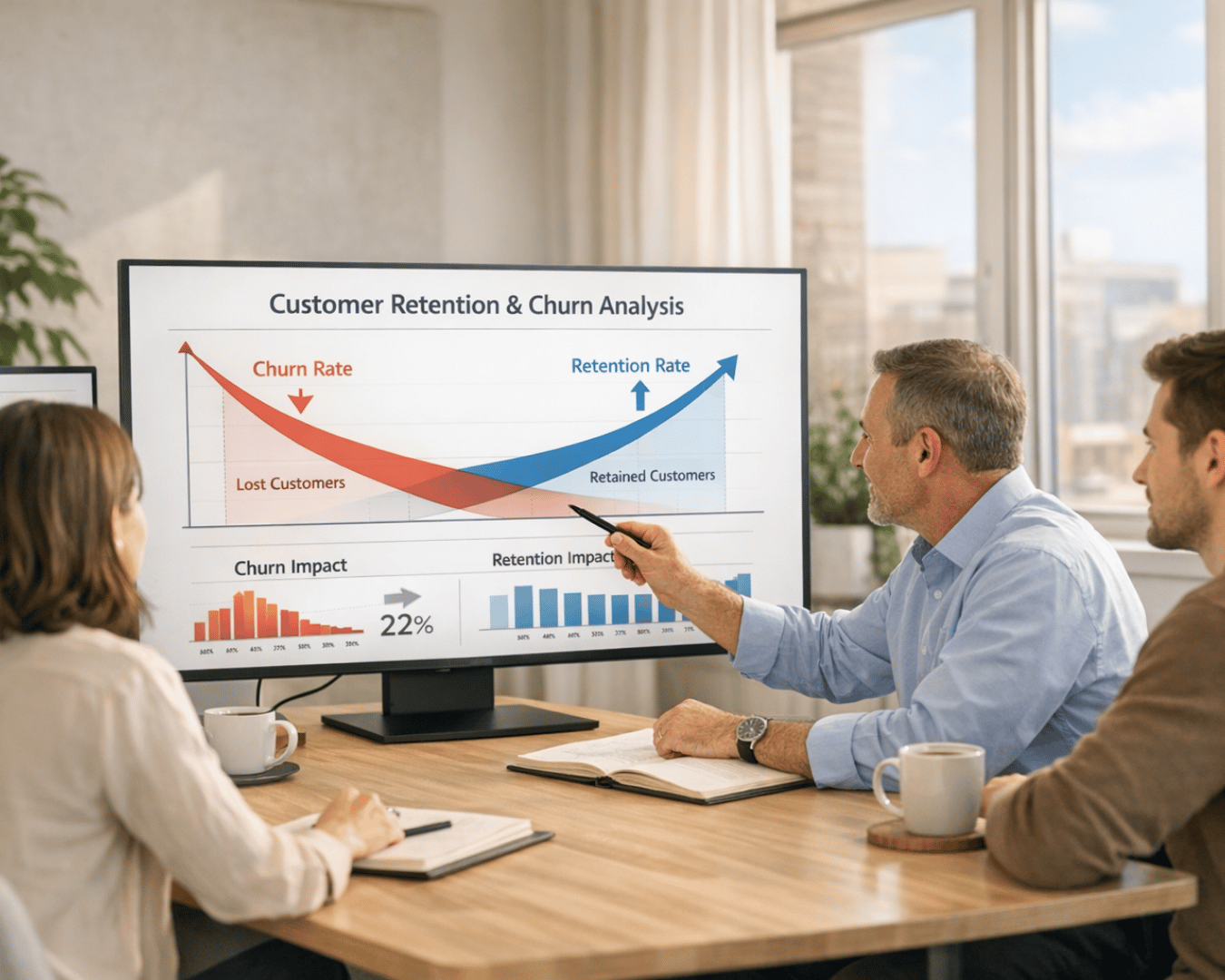





















.png)
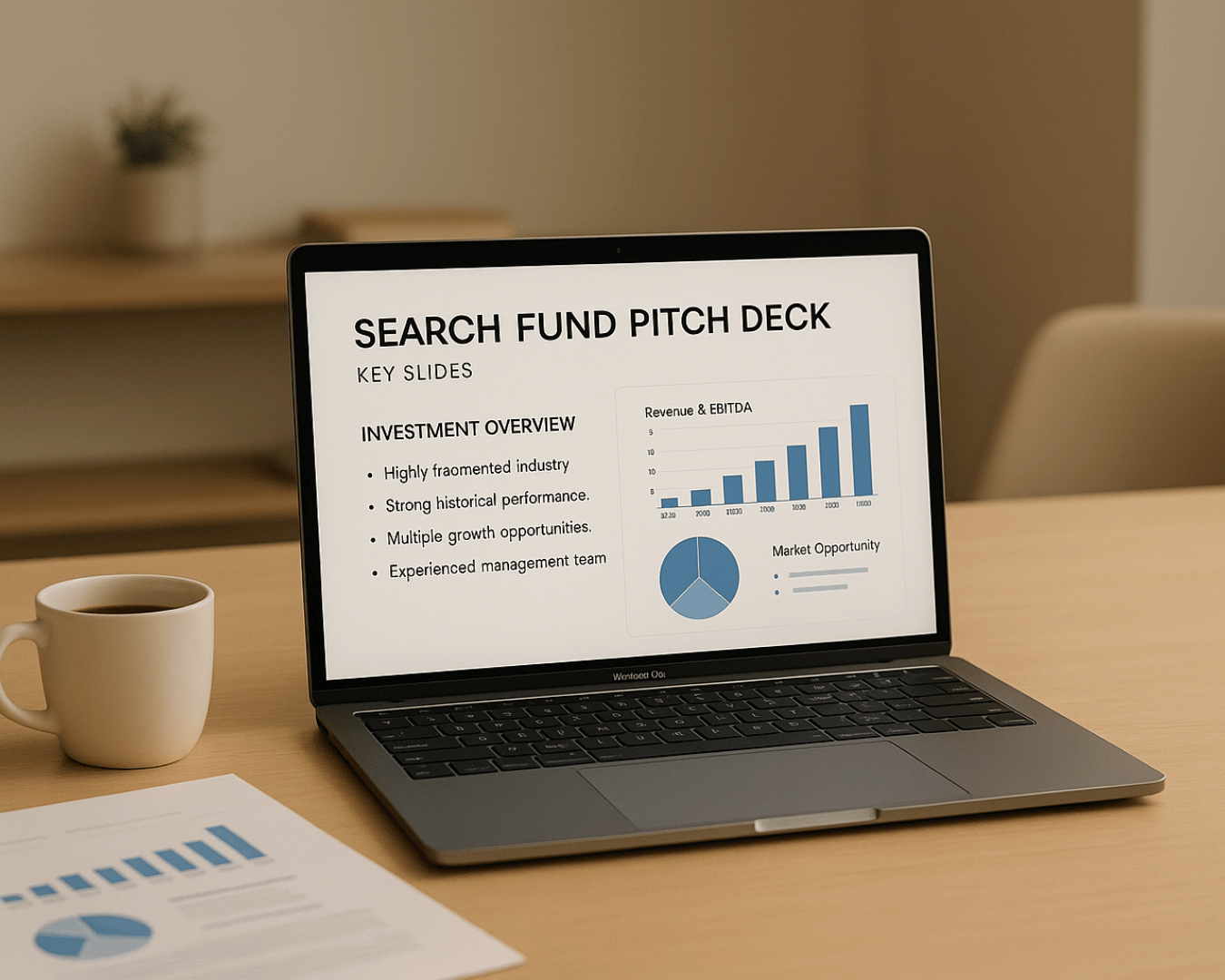
















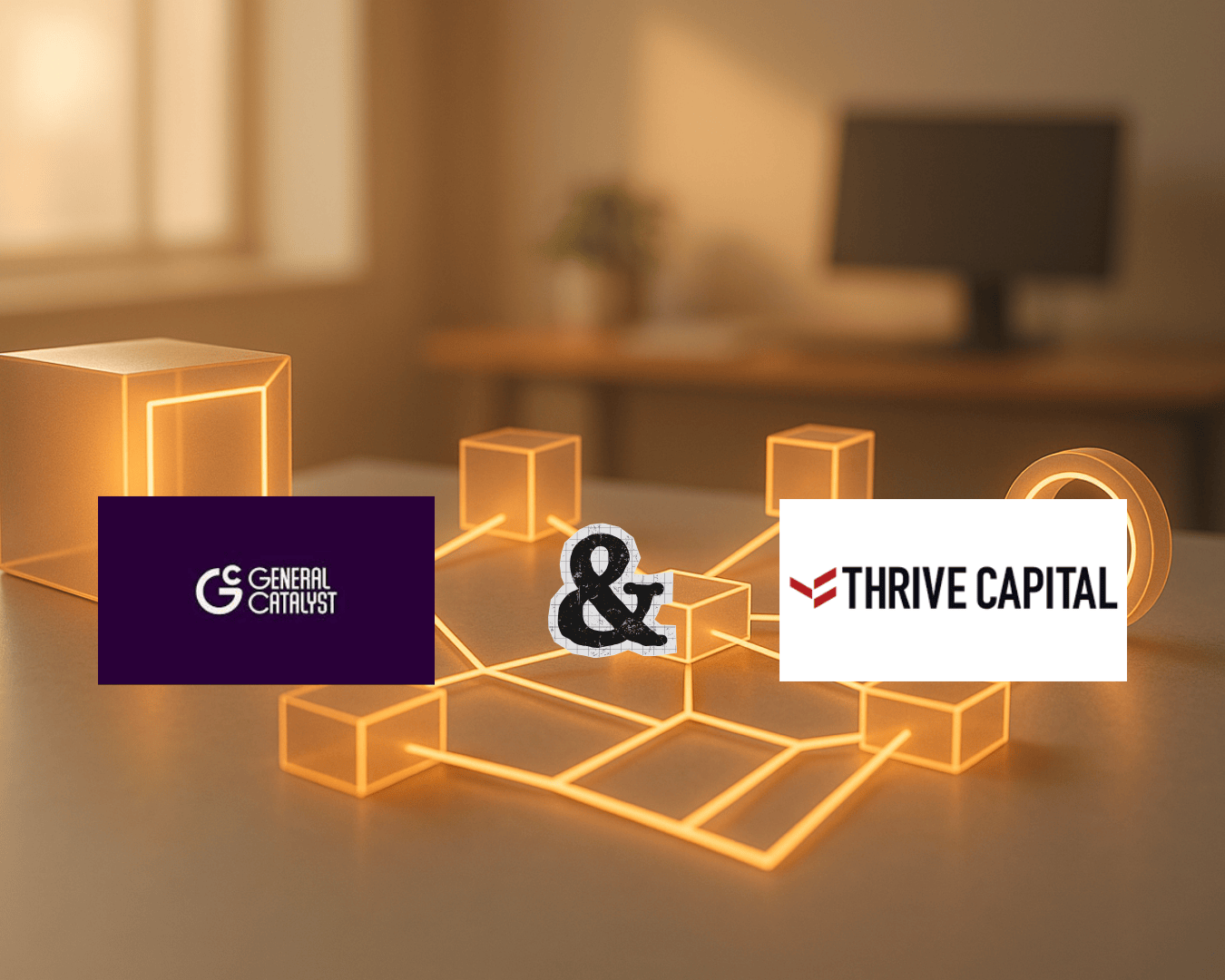











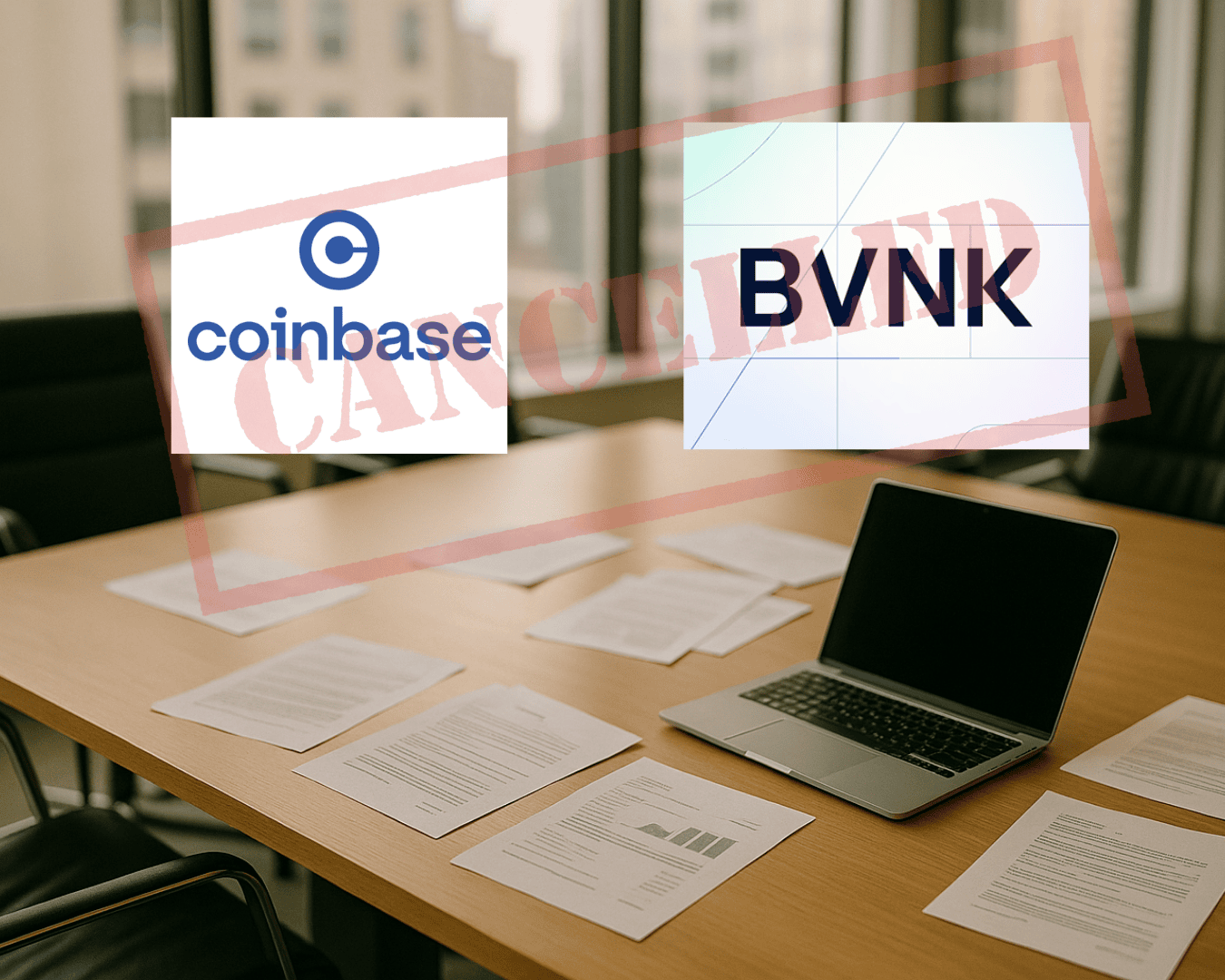









.png)




























